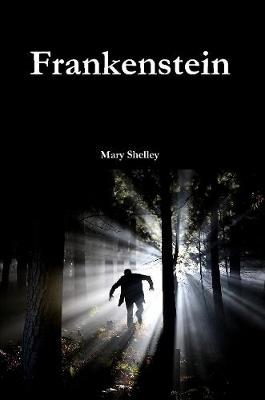Reviewed by Briana @ Pages Unbound on
Frankenstein is one of those classics that I find presents readers with some interesting themes to consider, but which is not necessarily a “good read.” The story opens slowly. Shelley employs letters and a narrative frame in order to introduce Frankenstein’s story of his creation. Because the frame is not particularly entertaining in itself and only emphasizes some of the themes raised in Frankenstein’s narrative instead of introducing its own themes, it seems to be mostly Shelley’s clumsy way of getting Frankenstein into a position where he can tell his story and where it will be recorded.
If this is her intention, the transition from the frame to Frankenstein’s tale is still awkward. Frankenstein’s story is in chapters, which are all presumably in a very long letter that someone else is writing. The jump from recognizable letters into narrative and back into letters is disconcerting, drawing readers out of Frankenstein’s story. I am, in general, not a fan of narrative frames, but this is one of the most attention-grabbing frames I have encountered.
Frankenstein’s story, once one can get into it, is intriguing, but certainly not the horror-filled version that has been put onto screen. Here, the monster is somewhat civilized, just looking for love. The scary part is not that the monster is going to come for you, the reader, or destroy the world at large. Indeed, only Frankenstein himself has much to fear, as the monster is primarily bent on destroying his life. What is scary for Shelley, then, is not violence or even the “unknown;” it is having to watch terrible things happen, being unable to prevent them, and even being in some way responsible for them. It is being in the shoes of Frankenstein himself, and not just an observer, that is horrifying.
So, in short, this is not a scary reading experience. Nor is it a particularly realistic one. Even ignoring the part where Frankenstein manages to create life, too much of the story is implausible and contrived. Everyone just happens to be in the right spot at the right moment for important plot issues to develop. For example, the monster learns to read by looking through a crack in a wall, where a family just happens to have taken in a foreigner who needs to learn to read. Really? Kudos to Shelley for realizing she ought to offer an explanation for things like this, such as how the monster learns (instead of creating him with the intelligence of a wise middle-aged man from the start), but I personally find too much of her explanations ridiculous.
The interest, then, for me, must be theme-wise because not much of it comes from the plot. Shelly essentially suggests that knowledge can be dangerous. How much knowledge, and what type of knowledge is open for interpretation, but I personally see the story as a warning about going “too far,” rather than one criticizing all searches for knowledge. Shelley did, after all, come from an intellectual family and was clearly interested in science and literature herself. The story also suggests that, as a balance to knowledge, one should build strong bonds with family and community in order to stay grounded and connected to things (people) that are truly important.
The book is worth reading for its exploration of what constitutes “science gone wrong” and how personally responsible each of us might be for that, as well as for its influence on later horror stories and science fiction. It is unlikely to do much for readers looking to be personally terrified or to experience a wild and surprising plot.
Reading updates
- Started reading
- 12 February, 2013: Finished reading
- 12 February, 2013: Reviewed
- Started reading
- Finished reading
- 12 February, 2013: Reviewed
